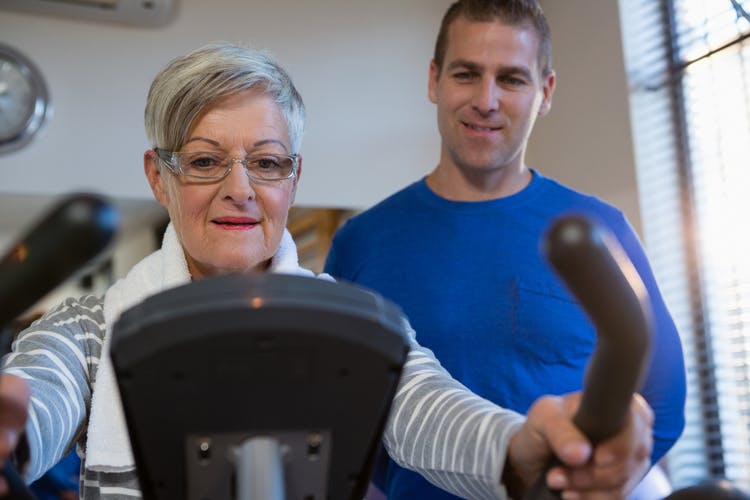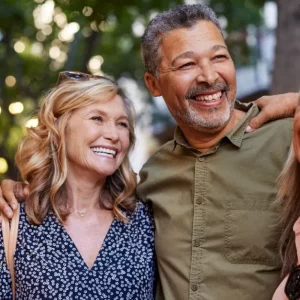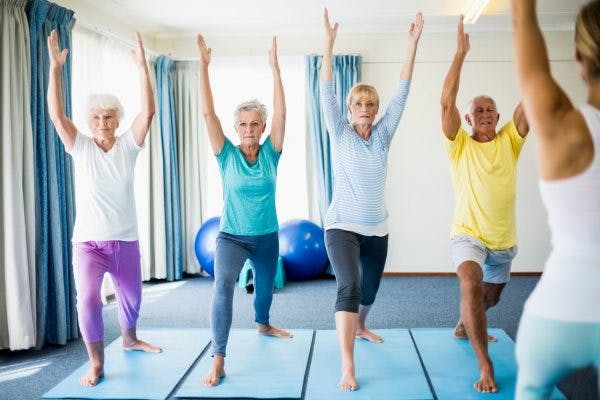Generally speaking, “chronic stroke” refers to the period of recovery that takes place at least six months after the initial stroke occurred. When a survivor enters this stage of recovery, their progress may appear slower than it did in the acute stage. However, improvements are still possible, even decades after a stroke.
This article will address why recovery may slow down in the chronic stages of stroke recovery and how to encourage the brain to continue its healing process. Use the links below to jump directly to any section:
- Why does chronic stroke recovery seem slower?
- How are improvements possible?
- Interventions to promote recovery
- Other considerations
Why Does Chronic Stroke Recovery Seem Slower?
Just as every stroke is different, each survivor’s recovery journey is unique. However, many survivors go through a relatively predictable period of rapid improvements, followed by a period of slower progress, where stagnation and minor regressions may also occur.
The most rapid period of recovery often occurs within the first three months following a stroke. Throughout this period, the brain is in a heightened state of neuroplasticity, allowing neural pathways to be created and strengthened more easily.
The brain also possesses the innate ability to repair and salvage areas that have been damaged but not destroyed. When this occurs, some functions might naturally return without any intervention. This phenomenon, referred to as spontaneous recovery, is most likely to occur within the first six months of stroke recovery.
With the combined effects of enhanced neuroplasticity and the potential for spontaneous recovery, it is not surprising that the first three to six months of recovery are often filled with great progress. As individuals move into the stage of chronic stroke, regaining functions often becomes more challenging. However, there is always hope for recovery, even years after stroke.
How to Improve During the Chronic Stage of Stroke Recovery
During the acute and subacute stages of recovery, individuals are often engaged in inpatient or home-based therapies on a regular basis. Many survivors are strongly motivated to improve at this time, and they often experience noticeable progress.
By six months post-stroke, progress may not be as readily apparent. Survivors may become weary of working toward recovery, and therapy sessions may become farther apart or discontinued completely due to insurance coverage. While stroke recovery is always possible, these factors can make chronic stroke recovery even more challenging.
The best way to encourage recovery from stroke, even in the chronic stage, is to promote neuroplasticity. Repetitive stimulation through therapeutic exercises and activities can spark neuroplastic changes, allowing the brain to reorganize itself to improve affected functions. While this can be a slow process in the chronic stages of recovery, more frequent practice is more likely to bring about positive changes.
Interventions to Promote Chronic Stroke Recovery
Research has shown that recovery is possible even in the chronic stages of stroke. Working with a team of doctors and rehabilitation professionals can help individuals learn which stroke recovery techniques may be most effective for their specific needs. The following list provides a starting point for individuals looking to regain functions more than six months after stroke:
Interventions to Improve Arm Functions
Research shows that although many stroke survivors experience deficits on only one side of the body, it is often beneficial to use interventions involving both arms working together in addition to those focused only on the affected arm. While treatments focused on the affected arm may improve functions required for self-care, interventions involving both arms may be more effective for improving arm strength and quality movements.
Motor imagery and/or mental practice, in which individuals visualize themselves performing a movement without actually moving, can also be an effective way to promote arm functions when used in conjunction with conventional treatments. Evidence is also increasing for the effectiveness of several other chronic stroke treatments, including robot-assisted therapy, electrical stimulation, and brain stimulation.
Treatments to Improve Mobility
Participating in treadmill training and overground walking therapy (walking in normal environments with frequent feedback from a physical therapist) can improve motor functions and quality of life. To experience these benefits, a 2022 systematic review recommends participating in more than 30 minutes of treadmill training and/or overground walking at least 3 times per week over a 2 month period.
Techniques to Regain Cognitive Functions
While research regarding chronic stroke recovery primarily focuses on improving physical functions, there are a few recommendations for improving cognition. Mainly addressed by speech-language pathologists, cognitive rehabilitation strategies often include paper-and-pencil tasks, although technology-based programs are becoming more widespread.
Goal-setting and regular physical activity can also help chronic stroke survivors improve cognition. In fact, engaging in both aerobic and strength training programs may promote improved cognitive performance.
Interventions for Language Deficits
Research has demonstrated that intensive speech therapy intervention can improve language among chronic stroke survivors. While the optimal duration and intensity of treatment has not yet been established, studies suggest that working with a speech language pathologist for 1-2 hours per day over a 2-4 week period can improve skills, even several months post-stroke.
Treatments focusing on behavioral and language skill training in social situations rather than those involving more conventional language exercises are often more effective. Other strategies, such as constraint-induced aphasia therapy, may also help individuals restore language skills in the chronic stages of stroke.
The best interventions vary greatly depending on which functional skills individuals are working to improve. Survivors should talk with their medical team regarding the functional areas they would like to address and which treatments may be most effective for regaining these skills.
Other Considerations
Chronic stroke recovery in the long term can be challenging, but it is possible. Physical, occupational and speech therapists can be excellent resources to work with as survivors work to boost their recovery outcomes.
However, although therapy sessions can be greatly beneficial, it is vital for individuals to continue working toward recovery even outside of therapy. Therapists may recommend specific tasks for survivors to practice as part of a home program. Since consistent, repetitive practice can activate neuroplasticity, it is essential to continue working toward recovery at home for optimal results.
Home therapy devices, such as FitMi and the CT Speech and Cognitive Therapy App, can also play a role in promoting recovery. These devices combine therapeutic exercises with motivating, game-like technology to help individuals stay engaged in their recovery. Furthermore, many home therapy devices can automatically adjust to the survivor’s skill level, providing challenging yet achievable tasks.
Support of family members and caregivers may also enhance recovery outcomes among chronic stroke survivors. A team approach to treatment, in addition to consistent practice, may allow chronic stroke survivors experience improvements, even years after their stroke.
Recovering During the Chronic Stages of Stroke
Stroke can affect many major abilities, such as movement, cognition, and communication. Although recovery can feel slow at times, the brain is capable of repairing itself even during the chronic stages.
While there are no guarantees, engaging in rigorous therapy may help survivors progress, even several months or years after their stroke. Because of the remarkable changes that may occur through neuroplasticity, the brain may be able to rebuild neural pathways and regain functions again.









